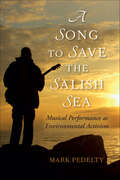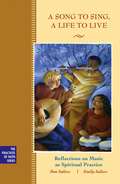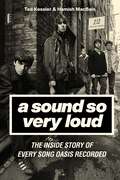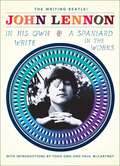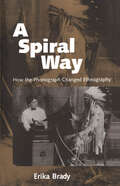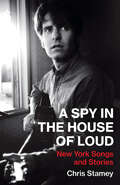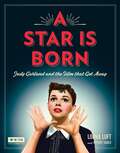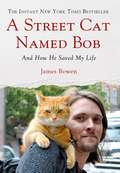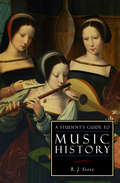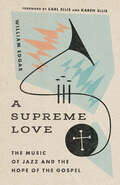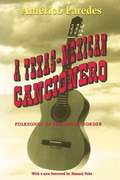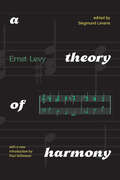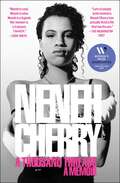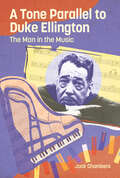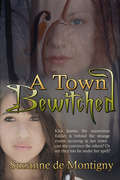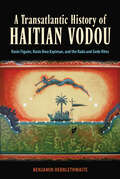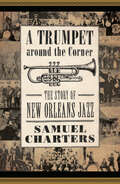- Table View
- List View
A Song to Save the Salish Sea: Musical Performance as Environmental Activism (Music, Nature, Place)
by Mark PedeltyOn the coast of Washington and British Columbia sit the misty forests and towering mountains of Cascadia. With archipelagos surrounding its shores and tidal surges of the Salish Sea trundling through the interior, this bioregion has long attracted loggers, fishing fleets, and land developers, each generation seeking successively harder to reach resources as old-growth stands, salmon stocks, and other natural endowments are depleted. Alongside encroaching developers and industrialists is the presence of a rich environmental movement that has historically built community through musical activism. From the Wobblies' Little Red Songbook (1909) to Woody Guthrie's Columbia River Songs (1941) on through to the Raging Grannies' formation in 1987, Cascadia's ecology has inspired legions of songwriters and musicians to advocate for preservation through music.In this book, Mark Pedelty explores Cascadia's vibrant eco-musical community in order to understand how environmentalist music imagines, and perhaps even creates, a more sustainable conception of place. Highlighting the music and environmental work of such various groups as Dana Lyons, the Raging Grannies, Idle No More, Towers and Trees, and Irthlingz, among others, Pedelty examines the divergent strategies—musical, organizational, and technological—used by each musical group to reach different audiences and to mobilize action. He concludes with a discussion of "applied ecomusicology," considering ways this book might be of use to activists and musicians at the community level.
A Song to Sing A Life to Live: Reflections on Music as Spiritual Practice
by Don Saliers Emily SaliersThe authors examine the ways that music relates to spirituality, our bodies, to personal growth, a search for justice and a search for God.
A Soprano on Her Head: Right-side-up Reflections on Life and Other Performances
by Eloise RistadIn a playful and experimental way, Eloise Ristad encourages her students to learn a lot about themselves in unconventional ways. New approaches to sight-reading and learning rhythms, and even reading sheet music, delight her students. Students find that they have clearer minds as they confront their "inner judges" and turn them into advisors. And you too, can do the same.
A Sound So Very Loud: The Inside Story of Every Song Oasis Recorded
by Ted KesslerThe first definitive history of the iconic band Oasis, as told through their music and using their songs as the starting point.A Sound So Very Loud is the first book to offer a definitive history of Oasis as narrated through their music, using their songs as the foundation, but breaking out more widely to include sections of background and cultural context. It's written by leading music journalists Ted Kessler and Hamish MacBain, who have very close ties to the band and their management, and have interviewed the Gallaghers dozens of times. There has never been a definitive, forensically detailed history of Oasis and their music; a book that takes readers to the heart of the band&’s work and what lay behind it in the kind of deeply researched, knowledgeable detail that has been afforded The Beatles, perhaps most notably with Ian MacDonald&’s Revolution In the Head, which examined every Beatles song in chronological detail. MacBain and Kessler&’s intention is to write the book that satisfies the many millions of fans globally similarly obsessed with Oasis&’s music, but who currently only have scattered social media pages to turn to add depth to the story. These authors deliver the definitive, chronological history of the songs of Oasis that will appeal to fans old and new, in doing so, bringing the wider Oasis story into play in glorious color. The pair have interviewed both Gallaghers dozens of times between 1994 and 2024, and no other journalists can claim more—or more lively—encounters with Liam and Noel. The book will also revisit each interview in the first-person, chronologically throughout, to add unique perspective and texture to the wider story. MacBain and Kessle will also dissect sleeve-art with the designers and photographers, delving into each detail surrounding the band. This is a veritable Oasis treasure trove!
A Soviet Credo: Shostakovich's Fourth Symphony
by Pauline FaircloughComposed in 1935-36 and intended to be his artistic 'credo', Shostakovich's Fourth Symphony was not performed publicly until 1961. Here, Dr Pauline Fairclough tackles head-on one of the most significant and least understood of Shostakovich's major works. She argues that the Fourth Symphony was radically different from its Soviet contemporaries in terms of its structure, dramaturgy, tone and even language, and therefore challenged the norms of Soviet symphonism at a crucial stage of its development. With the backing of prominent musicologists such as Ivan Sollertinsky, the composer could realistically have expected the premiere to have taken place, and may even have intended the symphony to be a model for a new kind of 'democratic' Soviet symphonism. Fairclough meticulously examines the score to inform a discussion of tonal and thematic processes, allusion, paraphrase and reference to musical types, or intonations. Such analysis is set deeply in the context of Soviet musical culture during the period 1932-36, involving Shostakovich's contemporaries Shebalin, Myaskovsky, Kabalevsky and Popov. A new method of analysis is also advanced here, where a range of Soviet and Western analytical methods are informed by the theoretical work of Shostakovich's contemporaries Viktor Shklovsky, Boris Tomashevsky, Mikhail Bakhtin and Ivan Sollertinsky, together with Theodor Adorno's late study of Mahler. In this way, the book will significantly increase an understanding of the symphony and its context.
A Spaniard in the Works
by John LennonAN OMNIBUS EDITION OF JOHN LENNON' S WHIMSICAL POETRY, PROSE, AND DRAWINGS, REISSUED IN CELEBRATION OF THE 70TH ANNIVERSARY OF HIS BIRTH.
A Spiral Way: How the Phonograph Changed Ethnography
by Erika BradyAssociation of Recorded Sound Collections Awards for ExcellenceBest Research in the General History of Recorded Sound (2000)The invention of the cylinder phonograph at the end of the nineteenth century opened up a new world for cultural research. Indeed, Edison's talking machine became one of the basic tools of anthropology. It not only equipped researchers with the means of preserving folk songs but it also enabled them to investigate a wide spectrum of distinct vocal expressions in the emerging fields of anthropology and folklore. Ethnographers grasped its huge potential and fanned out through regional America to record rituals, stories, word lists, and songs in isolated cultures. From the outset the federal government helped fuel the momentum to record cultures that were at risk of being lost. Through the Bureau of American Ethnology, the Smithsonian Institution took an active role in preserving native heritage. It supported projects to make phonographic documentation of American Indian language, music, and rituals before developing technologies and national expansion might futher undermine them. This study of the early phonograph's impact shows traditional ethnography being transformed, for attitudes of both ethnographers and performers were reshaped by this exciting technology. In the presence of the phonograph both fieldwork and the materials collected were revolutionized. By radically altering the old research modes, the phonograph brought the disciplines of anthropology and folklore into the modern era. At first the instrument was as strange and new to the fieldworkers as it was to their subjects. To some the first encounter with the phonograph was a deeply unsettling experience. When it was demonstrated in 1878 before members of the National Academy of Sciences, several members of the audience fainted. Even its inventor was astonished. Of his first successful test of his tinfoil phonograph, Thomas A. Edison said, "I was never taken so aback in my life." The cylinders that have survived from these times offer an unrivaled resource not only for contemporary scholarship but also for a grassroots renaissance of cultural and religious values. In tracing the historical interplay of the talking machine with field research, A Spiral Way underscores the natural adaptablity of cultural study to this new technology.
A Spy in the House of Loud: New York Songs and Stories (American Music Series)
by Chris StameyPopular music was in a creative upheaval in the late 1970s. As the singer-songwriter and producer Chris Stamey remembers, “the old guard had become bloated, cartoonish, and widely co-opted by a search for maximum corporate profits, and we wanted none of it.” In A Spy in the House of Loud, he takes us back to the auteur explosion happening in New York clubs such as the Bowery’s CBGB as Television, Talking Heads, R.E.M., and other innovative bands were rewriting the rules. Just twenty-two years old and newly arrived from North Carolina, Stamey immersed himself in the action, playing a year with Alex Chilton before forming the dB’s and recording the albums Stands for deciBels and Repercussion, which still have an enthusiastic following. A Spy in the House of Loud vividly captures the energy that drove the music scene as arena rock gave way to punk and other new streams of electric music. Stamey tells engrossing backstories about creating in the recording studio, describing both the inspiration and the harmonic decisions behind many of his compositions, as well as providing insights into other people’s music and the process of songwriting. Photos, mixer-channel and track assignment notes, and other inside-the-studio materials illustrate the stories. Revealing another side of the CBGB era, which has been stereotyped as punk rock, safety pins, and provocation, A Spy in the House of Loud portrays a southern artist’s coming-of-age in New York’s frontier abandon as he searches for new ways to break the rules and make some noise.
A Spy in the House of Loud: New York Songs and Stories (American Music Series)
by Chris StameyThe musician & producer reflects on New York City&’s early punk rock scene, as well as the creation of some of his most famous albums in this memoir.Popular music was in a creative upheaval in the late 1970s. As the singer-songwriter and producer Chris Stamey remembers, &“the old guard had become bloated, cartoonish, and widely co-opted by a search for maximum corporate profits, and we wanted none of it.&” In A Spy in the House of Loud, he takes us back to the auteur explosion happening in New York clubs such as the Bowery&’s CBGB as Television, Talking Heads, R.E.M., and other innovative bands were rewriting the rules. Just twenty-two years old and newly arrived from North Carolina, Stamey immersed himself in the action, playing a year with Alex Chilton before forming the dB&’s and recording the albums Stands for deciBels and Repercussion, which still have an enthusiastic following.A Spy in the House of Loud vividly captures the energy that drove the music scene as arena rock gave way to punk and other new streams of electric music. Stamey tells engrossing backstories about creating in the recording studio, describing both the inspiration and the harmonic decisions behind many of his compositions, as well as providing insights into other people&’s music and the process of songwriting. Photos, mixer-channel and track assignment notes, and other inside-the-studio materials illustrate the stories. Revealing another side of the CBGB era, which has been stereotyped as punk rock, safety pins, and provocation, A Spy in the House of Loud portrays a southern artist&’s coming-of-age in New York&’s frontier abandon as he searches for new ways to break the rules and make some noise.&“An endlessly fascinating odyssey through the worlds of Southern pop, New York City art punk, and American indie rock. Stamey&’s stories capture you with same finely etched detail and emotional depth that have always marked his best songs. Both an engrossing personal memoir and an eye-opening peek into the creative process, this is a truly essential work of music lit.&” —Bob Mehr, New York Times–bestselling author of Trouble Boys: The True Story of the Replacements &“Informed, eloquent, and daring, this book stands as a model of excellence for both music writing and memoir. Stamey moves effortlessly between analysis and reminiscence, history and personal revelation, shedding light on his own creative journey as well as the city—&‘planet New York&’—that provided a good deal of the inspiration for it. I simultaneously learned so much and was deeply moved.&” —Anthony DeCurtis, author of Lou Reed: A Life &“Where most musician autobiographies are fueled by backstage drama, this book focuses almost entirely on the creative process, a choice that not only proves to be compelling but helps turn Stamey&’s personal journey into a necessary document of peak-era college rock, illustrating how it was a vibrant scene filled with unexpected cross pollination.&” —Pitchfork
A Star Is Born: Judy Garland and the Film that Got Away (Turner Classic Movies)
by Lorna Luft Jeffrey VanceNew York Times bestselling author and daughter of Judy Garland tells the story of A Star Is Born -- at once the crowning achievement and greatest disappointment in her mother's legendary career. This is a vivid account of a film classic's production, loss, and reclamation.A Star Is Born -- the classic Hollywood tale about a young talent rising to superstardom, and the downfall of her mentor/lover along the way -- has never gone out of style. It has seen five film adaptations, but none compares to the 1954 version starring Judy Garland in her greatest role. But while it was the crowning performance of the legendary entertainer's career, the production turned into one of the most talked about in movie history.The story, which depicts the dark side of fame, addiction, loss, and suicide, paralleled Garland's own tumultuous life in many ways. While hitting alarmingly close to home for the fragile star, it ultimately led to a superlative performance -- one that was nominated for an Academy Award, but lost in one of the biggest upsets in Oscar history. Running far too long for the studio's tastes, Warner Bros. notoriously slashed extensive amounts of footage from the finished print, leaving A Star is Born in tatters and breaking the heart of both the film's star and director George Cukor.Today, with a director's cut reconstructed from previously lost scenes and audio, the 1954 A Star is Born has taken its deserved place among the most critically acclaimed movies of all time, and continues to inspire each new generation that discovers it. Now, Lorna Luft, daughter of Judy Garland and the film's producer, Sid Luft, tells the story of the production, and of her mother's fight to save her career, as only she could. Teaming with film historian Jeffrey Vance, A Star Is Born is a vivid and refreshingly candid account of the crafting, loss, and restoration of a movie classic, complemented by a trove of images from the family collection taken both on and off the set. The book also includes essays on the other screen adaptations of A Star Is Born, to round out a complete history of a story that has remained a Hollywood favorite for close to a century.
A Street Cat Named Bob: And How He Saved My Life
by James BowenThe Instant New York Times Bestseller! James is a street musician struggling to make ends meet. Bob is a stray cat looking for somewhere warm to sleep. When James and Bob meet, they forge a never-to-be-forgotten friendship that has been charming readers from Thailand to Turkey. A Street Cat Named Bob is an international sensation, landing on the bestseller list in England for 52 consecutive weeks and selling in 26 countries around the world. Now, James and Bob are ready to share their true story with the U. S. in this tale unlike any you’ve ever read of a cat who possesses some kind of magic. When street musician James Bowen found an injured cat curled up in the hallway of his apartment building, he had no idea how much his life was about to change. James was living hand to mouth on the streets of London, barely making enough money to feed himself, and the last thing he needed was a pet. Yet James couldn't resist helping the strikingly intelligent but very sick animal, whom he named Bob. He slowly nursed Bob back to health and then sent the cat on his way, imagining that he would never see him again. But Bob had other ideas. Perfect for fans of Marley & Me: Life and Love with the World's Worst Dog and Dewey: The Small-Town Library Cat That Changed the World, this instant classic about the power of love between man and animal has taken the world by storm and is guaranteed to be a huge hit with American fans as well. Note: Does not use standard American spelling or punctuation.
A Student's Guide to Music History (ISI Guides to the Major Disciplines)
by R.J. Stove&“Delightfully sophisticated . . . the only music history that can be savored, muscatel in hand, in the green shade of a beach umbrella&” (John Simon, The Hudson Review). R. J. Stove&’s A Student&’s Guide to Music History is a concise account, written for the intelligent lay reader, of classical music&’s development from the early Middle Ages onwards. Beginning with a discussion of Hildegard von Bingen, a twelfth-century German nun and composer, and the origins of plainchant, Stove&’s narrative recounts the rise (and ever-increasing complexity) of harmony during the medieval world, the differences between secular and sacred music, the glories of the contrapuntal style, and the origins of opera. Stove then relates the achievements of the high baroque period, the very different idioms that prevailed during the late eighteenth century, and the emergence of Romanticism, with its emphasis upon the artist-hero. With the late nineteenth century came a growing emphasis on musical patriotism, writes Stove, especially in Spain, Hungary, Russia, Bohemia, Norway, Denmark, Finland, and the United States. A final section discusses the trends that have characterized music since 1945. Stove&’s guide also singles out eminent composers for special coverage, including Palestrina, Monteverdi, Handel, Bach, Haydn, Mozart, Beethoven, Schubert, Wagner, Verdi, Brahms, Debussy, Richard Strauss, Sibelius, and Messiaen. As a brief orientation to the history and contours of classical music, A Student&’s Guide to Music History is an unparalleled resource.
A Supreme Love: The Music of Jazz and the Hope of the Gospel
by William EdgarFor practitioners and fans, jazz expresses the deepest meanings of life.In this volume, theologian and jazz pianist William Edgar argues that the music of jazz cannot be properly understood apart from the Christian gospel, which like jazz moves from deep lament to inextinguishable joy. By tracing the development of jazz, placing it within the context of the African American experience, and exploring the work of jazz musicians like Miles Davis, Duke Ellington, John Coltrane, Ella Fitzgerald, and Louis Armstrong, Edgar argues that jazz deeply resonates with the hope that is ultimately found in the good news of Jesus Christ.Grab a table. The show is about to begin.
A Symphony Of Whales
by Steve Schuch Peter SylvadaGlashka can understand whale song--but with that mysterious power comes great responsibility. When she discovers thousands of whales trapped in a rapidly freezing inlet, she knows it is up to her to gather the people of her town to help them. Based on an actual event, this inspiring story follows Glashka and her people as they come to understand the importance of all life. Full-color illustrations.
A Texas-Mexican Cancionero: Folksongs of the Lower Border
by Manuel PeñaThe folksongs of Texas's Mexican population pulsate with the lives of folk heroes, gringos, smugglers, generals, jailbirds, and beautiful women. In his cancionero, or songbook, Américo Paredes presents sixty-six of these songs in bilingual text—along with their music, notes on tempo and performance, and discography. Manuel Peña's new foreword situates these songs within the main currents of Mexican American music.
A Theory of Harmony: With A New Introduction by Paul Wilkinson
by Ernst LevyErnst Levy was a visionary Swiss pianist, composer, and teacher who developed an approach to music theory that has come to be known as "negative harmony." Levy's theories have had a wide influence, from young British performer/composer Jacob Collier to jazz musicians like Steve Coleman. His posthumous text, A Theory of Harmony, summarizes his innovative ideas. A Theory of Harmony is a highly original explanation of the harmonic language of the modern era, illuminating the approaches of diverse styles of music. By breaking through age-old conceptions, Levy was able to reorient the way we experience musical harmony.British composer/music pedagogue Paul Wilkinson has written a new introduction that offers multiple points of entry to Levy’s work to make this text more accessible for a new generation of students, performers, and theorists. He relates Levy's work to innovations in improvisation, jazz, twentieth-century classical music, and the theoretical writings of a wide range of musical mavericks, including Harry Partch, Hugo Riemann, and David Lewin. Wilkinson shows how A Theory of Harmony continues to inspire original musical expression across multiple musical genres.
A Theory of Musical Narrative (Musical Meaning and Interpretation)
by Byron AlménByron Almén proposes an original synthesis of approaches to musical narrative from literary criticism, semiotics, historiography, musicology, and music theory, resulting in a significant critical reorientation of the field. This volume includes an extensive survey of traditional approaches to musical narrative illustrated by a wide variety of musical examples that highlight the range and applicability of the theoretical apparatus. Almén provides a careful delineation of the essential elements and preconditions of musical narrative organization, an eclectic analytical model applicable to a wide range of musical styles and repertoires, a classification scheme of narrative types and subtypes reflecting conceptually distinct narrative strategies, a wide array of interpretive categories, and a sensitivity to the dependence of narrative interpretation on the cultural milieu of the work, its various audiences, and the analyst. A Theory of Musical Narrative provides both an excellent introduction to an increasingly important conceptual domain and a complex reassessment of its possibilities and characteristics.
A Theory of Virtual Agency for Western Art Music (Musical Meaning and Interpretation)
by Robert S. HattenIn his third volume on musical expressive meaning, Robert S. Hatten examines virtual agency in music from the perspectives of movement, gesture, embodiment, topics, tropes, emotion, narrativity, and performance. Distinguished from the actual agency of composers and performers, whose intentional actions either create music as notated or manifest music as significant sound, virtual agency is inferred from the implied actions of those sounds, as they move and reveal tendencies within music-stylistic contexts. From our most basic attributions of sources for perceived energies in music, to the highest realm of our engagement with musical subjectivity, Hatten explains how virtual agents arose as distinct from actual ones, how unspecified actants can take on characteristics of (virtual) human agents, and how virtual agents assume various actorial roles. Along the way, Hatten demonstrates some of the musical means by which composers and performers from different historical eras have staged and projected various levels of virtual agency, engaging listeners imaginatively and interactively within the expressive realms of their virtual and fictional musical worlds.
A Thousand Threads: A Memoir
by Neneh Cherry*Named a Most Anticipated Book by New York magazine, The Associated Press, Town and Country, The Guardian, The BBC, and more* A vibrant memoir from Grammy-nominated singer-songwriter Neneh Cherry who shares an inside look at her fascinating career and globe-traversing journeys in a life of love and music. Born in Sweden in 1964, Neneh Cherry&’s father Ahmadu was a musician from Sierra Leone. Her mother, Moki, was a twenty-one-year-old Swedish textile artist. Her parents split up just after Neneh was born, and not long afterwards Moki met and fell in love with acclaimed jazz musician Don Cherry. Eventually, the strong pull New York City in the 1970s drew him them there, but they made a home wherever they traveled. Neneh and her brother Eagle-Eye experienced a life of creativity, freedom, and, of course, music. In A Thousand Threads, Neneh takes readers from the charming old schoolhouse in the woods of Sweden where she grew up, to the village in Sierra Leone that was birthplace of her biological father, to the early punk scene in London and New York, to finding her identity with her stepfather&’s family in Watts, California. Neneh has lived an extraordinary life of connectivity and creativity and she recounts in intimate detail how she burst onto the scene as a teenager in the punk band The Slits, and went on to release her first album in 1989 with a worldwide hit single &“Buffalo Stance.&” Neneh&’s inspiring and deeply compelling memoir both celebrates female empowerment and shines a light on the global music scene—and is perfect for anyone interested in the artistic life in all its forms.
A Tone Parallel to Duke Ellington: The Man in the Music (American Made Music Series)
by Jack ChambersIn this insightful new volume, Jack Chambers explores Edward Kennedy “Duke” Ellington’s music thematically, collating motifs, memes, and predilections that caught Ellington's attention and inspired his restless muse. In presenting Ellington’s work in this manner, Chambers situates the music in the context in which it was created—historical, political, musical, biographic, and personal. Chambers offers a novel kind of access to the man and the music. Ellington’s music presents a daunting task for listeners because of its sheer volume. The numbers defy credulity. Ellington (1899–1974) wrote more than two thousand compositions in numerous genres, including pop songs, big band swing, revues, hymns, tone poems, soundtracks, suites, ballets, concertos, and symphonies. Where to start? The themes in this book offer natural entry points. They provide the context in which the music came into being, with enough biography to satisfy music lovers, even those who come to the book knowing very little about Ellington’s life. Each chapter features its own playlist as a guide to the music discussed, and, in some cases, fuller listings in case readers might want to pursue a topic further. In the early chapters, Chambers covers topics that occupied Ellington through much of his career, and in later chapters he covers more specific themes, some of them from Ellington's last decades, which are less well studied. The music, Ellington said, is his “continuing autobiography,” and it reveals the man behind it.
A Town Bewitched
by Suzanne De MontignyIt’s tough for Kira, growing up in the small town of Hope as a child prodigy in classical violin, especially when her dad just died. And to make matters worse, Kate McDonough, the red-haired fiddler appears out of nowhere, bewitching the town with her mysterious Celtic music. Even Uncle Jack succumbs to her charms, forgetting his promise to look after Kira’s family. But when someone begins vandalizing the town leaving dead and gutted birds as a calling card, Kira knows without a doubt who’s behind it. Will anyone believe her?
A Transatlantic History of Haitian Vodou: Rasin Figuier, Rasin Bwa Kayiman, and the Rada and Gede Rites
by Benjamin HebblethwaiteConnecting four centuries of political, social, and religious history with fieldwork and language documentation, A Transatlantic History of Haitian Vodou analyzes Haitian Vodou’s African origins, transmission to Saint-Domingue, and promulgation through song in contemporary Haiti.Split into two sections, the African chapters focus on history, economics, and culture in Dahomey, Allada, and Hueda while scrutinizing the role of Europeans in fomenting tensions. The political, military, and slave trading histories of the kingdoms in the Bight of Benin reveal the circumstances of enslavement, including the geographies, ethnicities, languages, and cultures of enslavers and enslaved. The study of the spirits, rituals, structure, and music of the region’s religions sheds light on important sources for Haitian Vodou. Having royal, public, and private expressions, Vodun spirit-based traditions served as cultural systems that supported or contested power and enslavement. At once suppliers and victims of the European slave trade, the people of Dahomey, Allada, and Hueda deeply shaped the emergence of Haiti’s creolized culture. The Haitian chapters focus on Vodou’s Rada Rite (from Allada) and Gede Rite (from Abomey) through the songs of Rasin Figuier’s Vodou Lakay and Rasin Bwa Kayiman’s Guede, legendary rasin compact discs released on Jean Altidor’s Miami label, Mass Konpa Records. All the Vodou songs on the discs are analyzed with a method dubbed “Vodou hermeneutics” that harnesses history, religious studies, linguistics, literary criticism, and ethnomusicology in order to advance a scholarly approach to Vodou songs.
A Treasury of Early Music: Masterworks of the Middle Ages, the Renaissance and the Baroque Era (Dover Books on Music)
by Carl ParrishFifty first-rate musical compositions document the development of musical style from the early Middle Ages to the Middle of the 18th century. Among the selections are a Gregorian hymn, an English lute piece, operatic arias, instrumental and vocal motets, a French ballad, as well as works by Vivaldi, Telemann, Pergolesi, Scarlatti, Buxtehude, and other masters. Commentary evaluates style, form and historical setting, and complete compositions or sections of compositions are supplied when possible.
A Trumpet around the Corner: The Story of New Orleans Jazz (American Made Music Series)
by Samuel ChartersSamuel Charters has been studying and writing about New Orleans music for more than fifty years. A Trumpet around the Corner: The Story of New Orleans Jazz is the first book to tell the entire story of a century of jazz in New Orleans. Although there is still controversy over the racial origins and cultural sources of New Orleans jazz, Charters provides a balanced assessment of the role played by all three of the city's musical lineages--African American, white, and Creole--in jazz's formative years. Charters also maps the inroads blazed by the city's Italian immigrant musicians, who left their own imprint on the emerging styles. The study is based on the author's own interviews, begun in the 1950s, on the extensive material gathered by the Oral History Project in New Orleans, on the recent scholarship of a new generation of writers, and on an exhaustive examination of related newspaper files from the jazz era. The book extends the study area of his earlier book Jazz: New Orleans, 1885-1957, and breaks new ground with its in-depth discussion of the earliest New Orleans recordings. A Trumpet around the Corner for the first time brings the story up to the present, describing the worldwide interest in the New Orleans jazz revival of the 1950s and 1960s, and the exciting resurgence of the brass bands of the last decades. The book discusses the renewed concern over New Orleans's musical heritage, which is at great risk after the catastrophe of Hurricane Katrina's floodwaters.
A Version of Reason: The Search for Richey Edwards
by Rob JovanovicThe missing Manic - an authoritative look into the life and times of Richey Edwards, the Manic Street Preachers' guitarist who disappeared in 1995.The disappearance of Richey Edwards, troubled guitarist with the Manic Street Preachers, is one of rock and roll's great unresolved mysteries. His Vauxhall Cavalier was found abandoned in a service station car park near the Severn Bridge, a notorious suicide spot, in February 1995, a fortnight after Edwards had last been seen. The location of the car and the tape left in the deck - Nirvana's album In Utero - tended to point to one conclusion. However, it almost seemed too obvious a statement, and in A VERSION OF REASON, Rob Jovanovic unravels the complicated life and final days of Richey Edwards. Piecing together testimony from those close to Edwards Jovanovic seeks to produce an authoritative account of the life and times of Richey Edwards.
